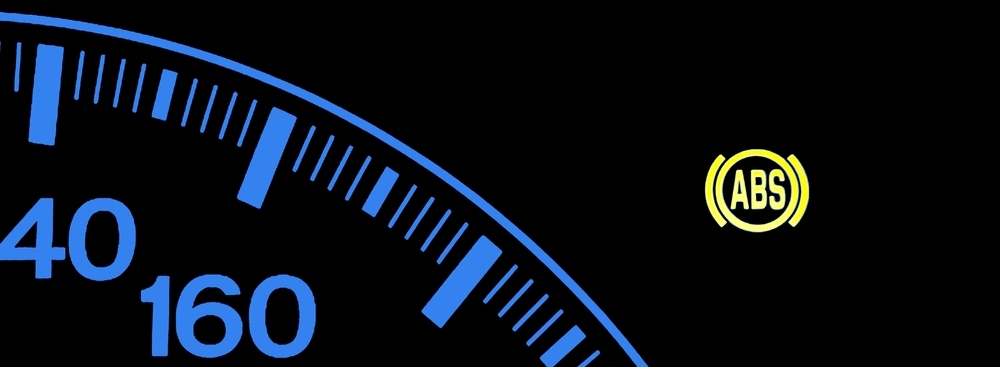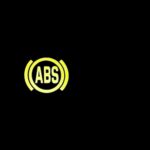
15 Apr ABS Dashboard Warning Light: Troubleshooting Tips
 Few things are more scary than having a red or amber light illuminate your dashboard while driving. A triggered ABS or brake light can indicate a serious issue with one of your car’s most important safety systems. Take your ABS dashboard warning light seriously because a bad speed sensor can deactivate your entire anti-lock braking system. Keep reading for helpful troubleshooting tips and common causes of an ABS dashboard warning light.
Few things are more scary than having a red or amber light illuminate your dashboard while driving. A triggered ABS or brake light can indicate a serious issue with one of your car’s most important safety systems. Take your ABS dashboard warning light seriously because a bad speed sensor can deactivate your entire anti-lock braking system. Keep reading for helpful troubleshooting tips and common causes of an ABS dashboard warning light.
ABS = Anti-Lock Braking System
‘ABS’ is short for anti-lock braking system. Before ABS was standard equipment on all vehicles, when you slammed on the brakes, you experienced tire lock-up. Not only did you lose traction on one or more tires, but it was also difficult to maintain control of your car. Tire lock-up occurs because the friction between the brake pad and rotor is higher than the friction between the tire tread and the road.
While your tires are rotating, you actually have better control over your vehicle with a shorter stopping distance. A rolling tire has more grip or traction than a skidding tire. When the ABS is engaged, it sets and releases the brakes extremely quickly on all four wheels. Slowing the wheel’s rotational speed prevents tire lock-up and allows you to maintain control of your automobile.
Troubleshooting Tips
Safety First – Pull Over
If you are traveling at speed, use your indicator and move into the slow lane, then exit traffic to a safe spot. If it is nighttime, park where there is sufficient light to see and be seen easily. Turn on your hazard lights and put out your emergency lights, reflectors, or other safety equipment stored in your trunk or emergency kit.
Check Dashboard Lights
Initially, there were just a few dashboard light warnings for oil, coolant, and electrical problems. As auto manufacturers increased the number of safety and comfort features, the complexity of the warning system also increased. Every year, the vehicle’s dashboard must accommodate an increasing number of warning lights. Identifying which warning lights are triggered can help narrow down the possible causes.
Read Owner’s Manual
Most owner’s manuals have a whole section dedicated to dashboard warning lights. Look up the details for any illuminated warning lights and follow the troubleshooting suggestions outlined in your manual. You may be able to determine whether the issue is a major one requiring immediate service or a minor one you can deal with once you reach home.
Identify Physical Symptoms
Once you have determined what component the warning lights indicate, look for physical symptoms. If you are in a safe spot, walk around your car and look for leaking fluids, broken components, or even a burned smell. Road debris or ice chunks can often lodge in a wheel well or in the rim and cause disruptions or damage to sensors, wiring, and brake components.
Safe to Drive or Call Tow Truck
Depending on the circumstances of your ABS issues, determine if it is safe to continue driving your vehicle or if you should call for roadside assistance. Driving your vehicle is hazardous when both the brake system and the ABS dashboard warning light are on. When it comes to your car’s braking ability (or lack of it), it’s often wiser to be safe and arrange a tow to your service station.
Common Causes For ABS Dashboard Warning Light
Your vehicle can trigger an ABS dashboard warning light for many reasons; most involve a signal loss or a mechanical failure. Anti-lock braking systems have substantial fault code libraries that you can access with an OBD-II scan tool. Knowing which components can cause an ABS dashboard warning light to illuminate will make the diagnosis easier.
Bad ABS Speed Sensor
Find the ABS speed sensor on the wheel behind the brake rotor or directly on the axle. Each vehicle contains a different number of speed sensors. A bad ABS speed sensor will not only trigger an ABS warning light on the dashboard, but you may also notice a pulsating brake pedal, loss of anti-lock brakes, or reduced traction control. Additional dashboard warning lights, such as the check engine light or the traction control light, may also be illuminated.
Blown Fuse
A blown fuse is a possible cause of your ABS warning light illuminating. Fuses protect your vehicle’s electrical circuits – they break the circuit when too much electric current flows. Check if a blown fuse is the cause of the issue. First, locate your car’s fuse box (it is often under the hood or tucked under the driver’s side dashboard). Open the box and closely look at the fuses to see if any of them look dark, cloudy, or have a visibly broken wire inside the glass. Replace blown fuses with new ones and see if the ABS warning light turns off.
Damaged or Worn-out Hydraulic Pump
When one wheel of a car moves at a different speed than the others, the wheel speed sensor detects it and alerts the ABS. The anti-lock braking system increases the brake fluid pressure to the hydraulic pump, allowing the wheels to retain traction on the ground. Hydraulic pumps do wear out with repetitive use and require replacement. In this case, schedule a service to replace the worn-out pump.
Dirty or Cracked Tone Ring
The front tone rings are usually installed on front-wheel-drive vehicles’ driveshafts or around the wheel bearings or hubs. The rear rings are generally located on a rear-wheel-drive vehicle’s rear driveshafts or around the wheel bearing/wheel hub. You can also find a single ABS tone ring inside the differential on some rear-wheel-drive autos. The tone ring detects the speed differences from the wheels and generates a signal to the ABS control module. If the ABS tone ring fails, the anti-lock system receives incorrect readings.
Faulty ABS Control Module
The ABS control module is the intellect behind your vehicle’s anti-lock braking system. The ABS controller powers up to self-test every time you turn on the ignition. If it receives insufficient data or a component isn’t responding, it illuminates the ABS warning light on your dashboard. The ABS control module receives signals from each ABS speed sensor, monitors when the brake pedal is engaged, and modulates the individual brake pressure of all four wheels in an emergency stop. The ABS control module’s circuit board contains sensor inputs sensitive to temperature changes. Extremely hot and cold temperatures in your vehicle’s engine can compromise the delicate electronic components of the ABS controller.
Low Brake Fluid
Brake fluid controls the brake pressure with an anti-lock braking system. You can check the brake fluid reservoir for low brake fluid levels. Leaking brake fluid from the reservoir, brake lines, or seals will cause the fluid levels to drop. Air bubbles within the brake lines may cause the braking system or ABS warning light to illuminate your dashboard. In either case, have a service technician check your brakes for leaks, remove air bubbles, and ensure adequate brake fluid is in the system.
Systems Bulb Check
Some vehicles perform a ‘bulb check’ that illuminates the dashboard warning lights for a short time. This check is for the driver’s convenience so they know the bulbs of their vehicle’s warning lights are working properly. These lights will usually turn off by themselves after a certain amount of time. Sometimes, there may be a glitch in the ‘bulb check,’ which illuminates the ABS warning light after completing the bulb check.
Wheel Bearing Issue
While a wheel bearing isn’t truly an ABS component, it directly involves it and will throw the ABS into error mode if sufficiently damaged. When a wheel wobbles on its axis due to a worn-down wheel bearing, it can affect the tone ring functionality. Since tone rings are mounted to the axle shaft of most automobiles, worn or damaged wheel bearings alter the tone ring specifications and cause faulty signals to the speed sensor.
ABS Maintenance, Service & Repairs
Professional diagnostic computers used at auto service centers offer advanced testing capabilities. This equipment helps narrow down the possibilities, saving the technician time and resulting in faster repairs. If you want quality anti-lock braking system repairs in Plymouth Meeting, visit Plymouth Automotive and Tire Center. Our skilled team of mechanics can diagnose your ABS dashboard warning light and replace your speed sensor or other issue quickly.
Schedule An ABS Dashboard Warning Light Service
Call us at (610) 825-6558 or visit our website to schedule your appointment today!

